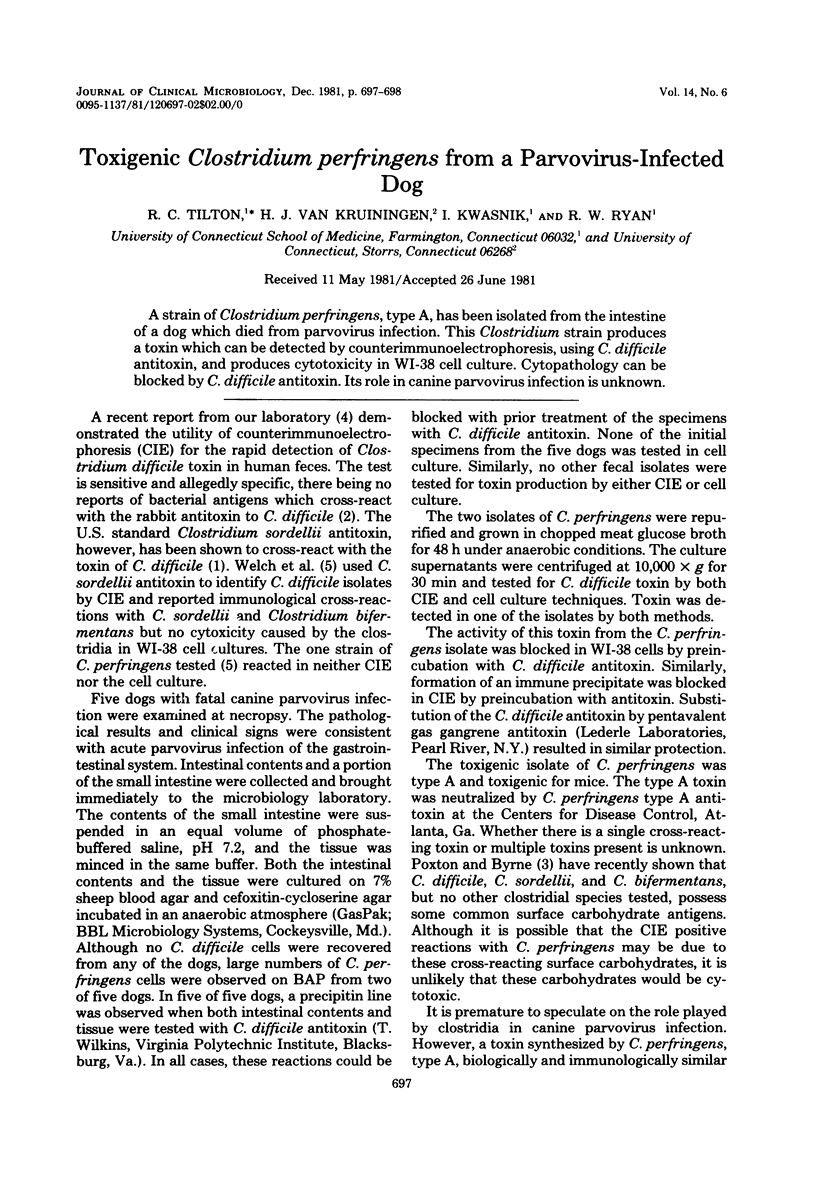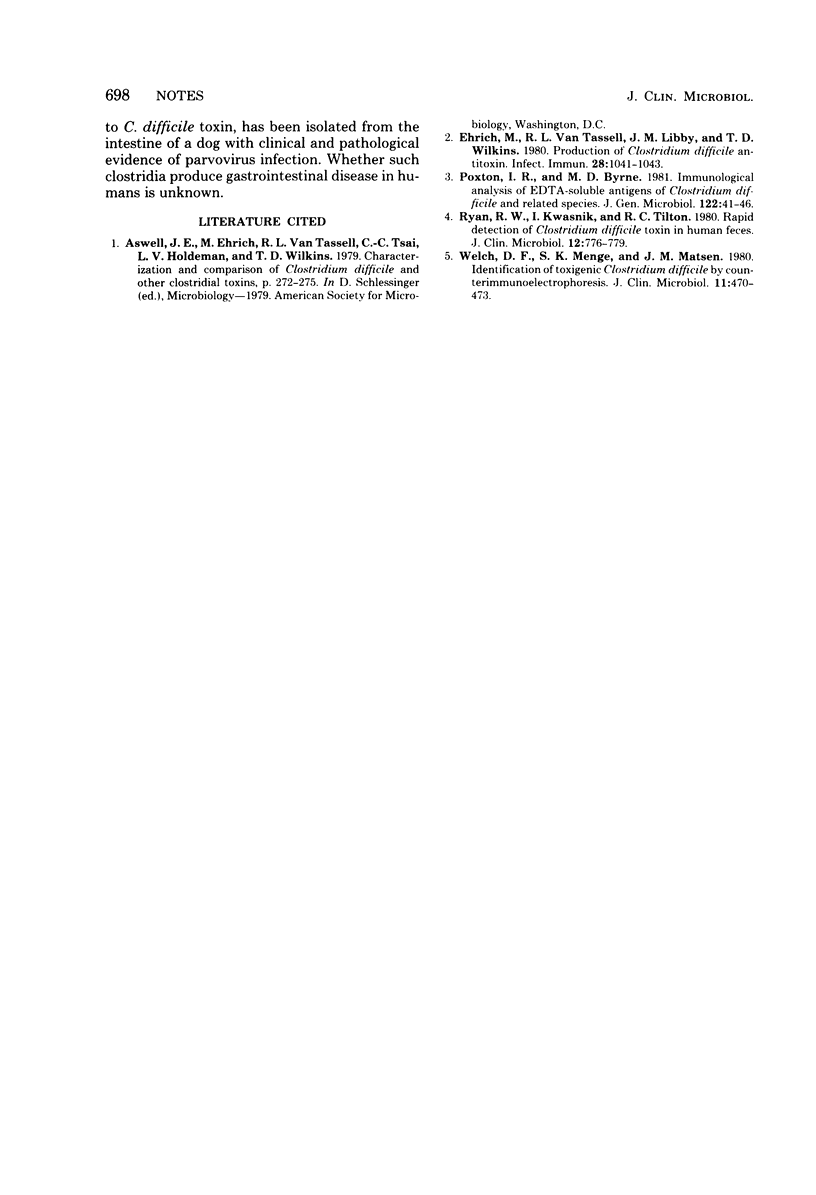Abstract
A strain of Clostridium perfringens, type A, has been isolated from the intestine of a dog which died from parvovirus infection. This Clostridium strain produces a toxin which can be detected by counterimmunoelectrophoresis, using C. difficile antitoxin, and produces cytotoxicity in WI-38 cell culture. Cytopathology can be blocked by C. difficile antitoxin. Its role in canine parvovirus infection is unknown.
Full text
PDF

Selected References
These references are in PubMed. This may not be the complete list of references from this article.
- Ehrich M., Van Tassell R. L., Libby J. M., Wilkins T. D. Production of Clostridium difficile antitoxin. Infect Immun. 1980 Jun;28(3):1041–1043. doi: 10.1128/iai.28.3.1041-1043.1980. [DOI] [PMC free article] [PubMed] [Google Scholar]
- Poxton I. R., Byrne M. D. Immunological analysis of the EDTA-soluble antigens of Clostridium difficile and related species. J Gen Microbiol. 1981 Jan;122(1):41–46. doi: 10.1099/00221287-122-1-41. [DOI] [PubMed] [Google Scholar]
- Ryan R. W., Kwasnik I., Tilton R. C. Rapid detection of Clostridium difficile toxin in human feces. J Clin Microbiol. 1980 Dec;12(6):776–779. doi: 10.1128/jcm.12.6.776-779.1980. [DOI] [PMC free article] [PubMed] [Google Scholar]
- Welch D. F., Menge S. K., Matsen J. M. Identification of toxigenic Clostridium difficile by counterimmunoelectrophoresis. J Clin Microbiol. 1980 May;11(5):470–473. doi: 10.1128/jcm.11.5.470-473.1980. [DOI] [PMC free article] [PubMed] [Google Scholar]


